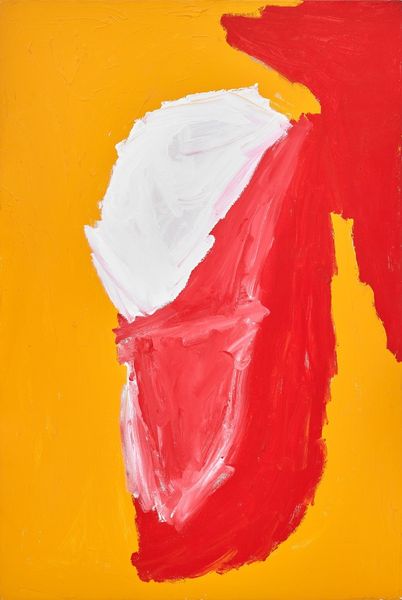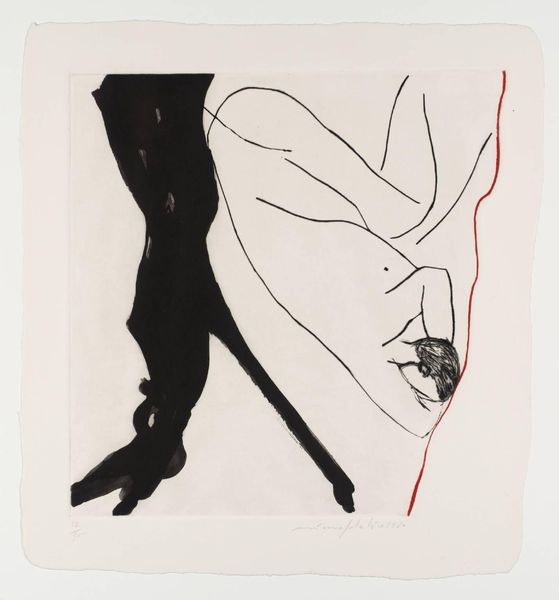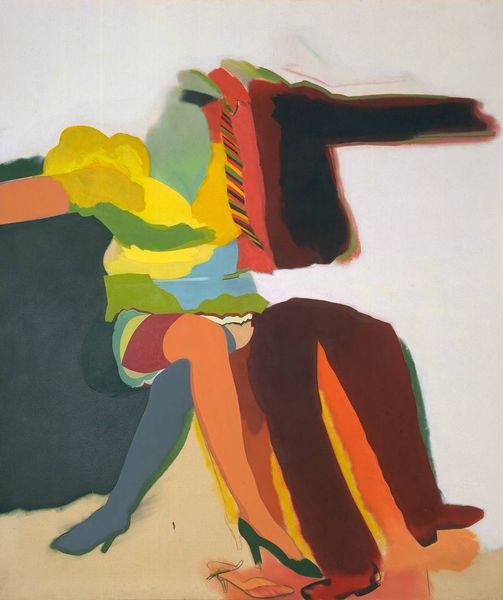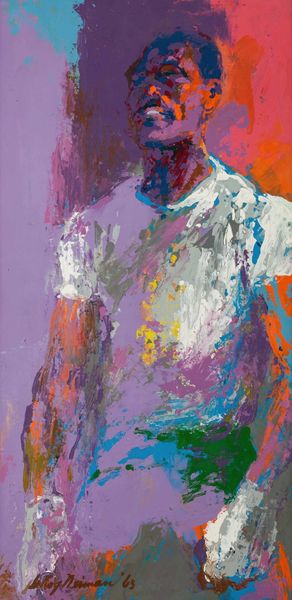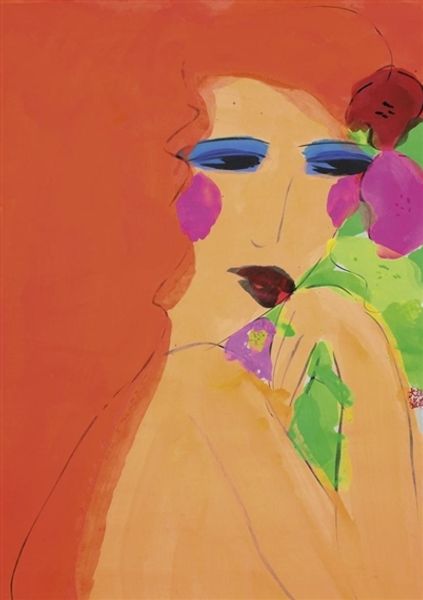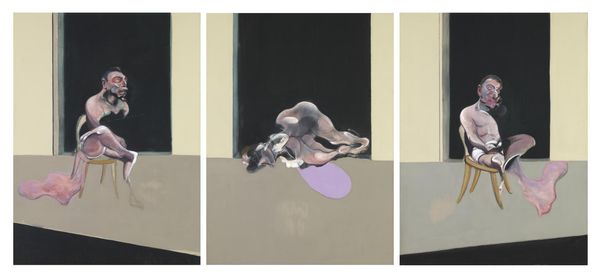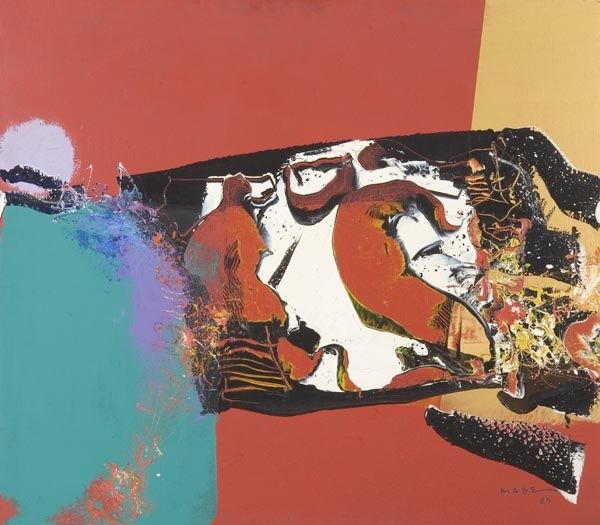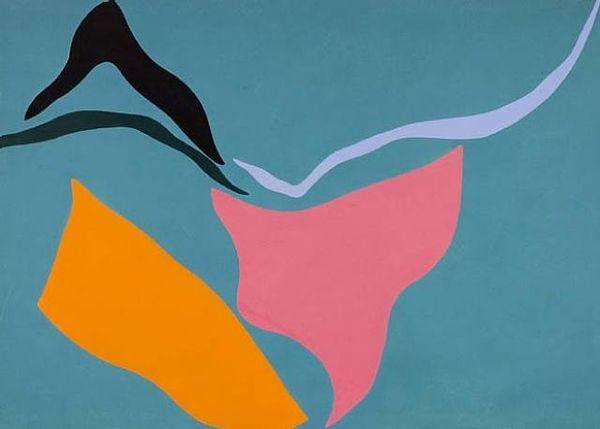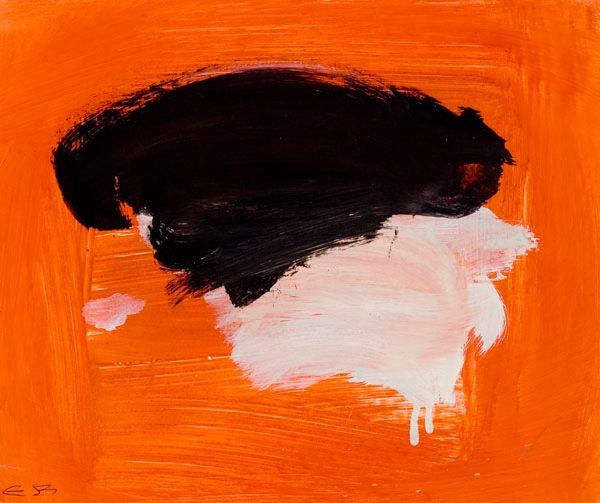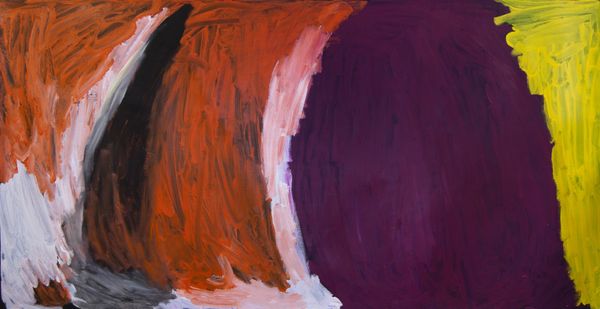
Copyright: Francis Bacon,Fair Use
Curator: Let’s explore Francis Bacon's "Triptych 1983," completed in 1984, a compelling work rendered in oil paint. Immediately, I'm struck by that dominant, almost unsettling orange—it permeates everything. Editor: Absolutely, the intensity of the orange creates an immediate visceral reaction. It speaks to themes of anxiety and alienation, reflecting Bacon's preoccupation with the human condition in the wake of war and personal trauma. The fragmented figures only amplify that sense of unease. Curator: Precisely. And within each panel, note how Bacon deploys spatial ambiguity. The figures seem suspended, trapped within these shallow, indeterminate planes. There’s a tension created between the flat expanses of color and the modeled forms of the figures themselves, an interplay that both reveals and obscures. Editor: I find it fascinating how Bacon grapples with representation itself. These aren’t straightforward portraits; they are visceral embodiments of psychological distress. Consider the center panel, the obscured face almost struggling against the darkness, suggesting an internal conflict, perhaps a fight for identity against societal forces. Curator: Good point. He definitely abstracts the figure, contorting and distorting anatomy to create an emotional charge. See how those thick brushstrokes render not just form, but also feeling? There's a clear engagement with the physicality of paint itself, a deliberate manipulation of materiality for expressive ends. Editor: Moreover, it's essential to consider Bacon’s homosexuality, as his work is often read through a queer lens. The figures contorted, exposed—can we see a reflection of social and personal repression, a pushing against the boundaries of acceptability? Curator: That’s an astute observation. I do think his use of the triptych format is quite interesting formally, linking itself to historical and religious connotations even as it deliberately departs from traditional compositions. Editor: Yes, it both evokes and subverts traditions, using a classical structure to depict something fundamentally modern and deeply unsettling. Understanding that dichotomy is key to interpreting his lasting impact on contemporary art. Curator: Indeed, his singular treatment of form and subject matter still demands consideration today. Editor: Agreed. A crucial reminder of the raw intensity that art can harness to reveal uncomfortable truths about humanity.
Comments
No comments
Be the first to comment and join the conversation on the ultimate creative platform.
